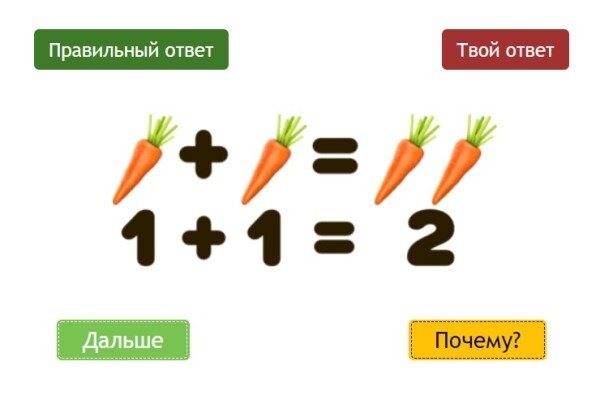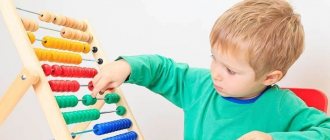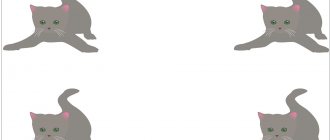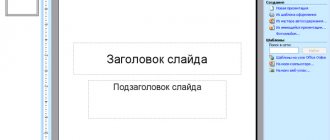How we play math
We have been playing math games with our children since early childhood, from the age of 3. The first was the game “Kitten's Journey”.
My son picked up a toy kitten, we sat down in front of the globe, and the journey began. We imagined that a fast train was rushing a kitten from our city across the entire continent, and tried to imagine the pictures that the kitten sees. Along the way, the kitten had to draw a path through a maze, or collect precious stones in a cave, or help a little beaver build a house. Of course, our son helped the kitten complete the proposed tasks. Sometimes we “boarded” into a rocket and flew to the stars, exploring them, the planets and space itself. Sometimes we shrank down to microscopic size and traveled through the blood vessels of the human body, studying the composition of the blood and the location and properties of the body's organs. The son grew, the tasks became more complicated. His next favorite game was Lego Programming. We drew labyrinths through which, by issuing commands “forward”, “backwards”, “right”, “left” with four colors of Lego blocks, we had to guide a robot or car. At the same time, there were many games for classification and sorting of objects.
Then a math club was organized for children aged 4-6 years old - we spent two years together playing and learning new things. Then our daughters were born, after them new games appeared and the old ones were enriched. Finally, we collected what we had accumulated over ten years of study into a book. Each chapter begins with a story about how dad or mom play with their children - Kolya and Katya. You can discuss the games from the story with your child, you can play them, or you can complete the tasks suggested at the end of the chapter.
Here are some games from this book.
Four cars
An example of a visual game for sorting objects by color.
- Dad, I'm bored! Play with me! - Kolya called his father. - Fine. What are we going to play? - In Lego. - Amazing. Would you like me to show you something interesting? - Dad sat down opposite Kolya and poured out all the Lego between them. Then dad took four trucks from the shelf and suggested: “We have Lego parts in four colors.” Let's arrange them among the cars: the first one will carry red parts, the second one will carry blue parts, and the next two will carry yellow and green parts. We will take the parts to the other end of the room and there we will build four garages from them: red, blue, yellow and green.
Robot in the maze
This game is aimed at developing algorithmic thinking. This is how we learn to solve complex problems using a sequence of simple actions.
- Kolya, imagine that you are a robot. Stand here, on the arrow showing the entrance to the labyrinth. You should only walk when you hear the command, and take one step at a time in the direction indicated to you. Katya will manage you.
The guys were happy and agreed. Then dad put Kolya in front of the entrance to the maze, and Katya next to Kolya, and said that the robot only understood simple commands: forward, backward, right and left; and that at each command he takes a step in the indicated direction and freezes, waiting for the next command. And that he cannot enter squares on which there are obstacles.
Multi-colored candies (logic problem)
Mom: - I bought you three candies: green, red and yellow. For Katya - not green, for Kolya - not yellow, for dad - neither red nor green. Guess which candies I bought for whom.
Examples in pictures
Examples in pictures are suitable for beginner mathematicians. A visual image will help the child better see the cause-and-effect relationship of changes in quantity.

Download worksheets for solving addition and subtraction examples.
You will find even more examples for preschoolers in the section Adding and Subtracting
Examples within 10
Gradually, the child will be better and better at calculating within 10. To learn how to “crack” examples like nuts, you need to solve a lot. But simply solving the same type of examples is boring. Math should be interesting!
So that your child can practice writing examples at any time, we have come up with ready-made tasks for you. Just download, print and get started!
Consultation for parents “Fun math at home”
Parents can provide invaluable assistance in a preschooler’s child’s mastery of elementary mathematical concepts from the age of 3. And only the joint work of the kindergarten and the family can ensure the child’s success in mastering this section of the preschool educational institution program.
The home environment contributes to the child’s liberation and he learns educational material at his own pace, consolidating the knowledge acquired in kindergarten. Parents, in turn, learn a lot about their child.
Therefore, we can recommend some mathematical games and exercises for doing them with the family. These games are accessible to children of primary preschool age and do not require lengthy preparation or production of complex didactic material.
1. Mathematical game “Match the wheels to the trailers”
Purpose of the game: learning to distinguish and name geometric shapes, establishing correspondence between groups of shapes, counting to 5.
Progress of the game: the child is asked to select the appropriate wheels - red wheels for the blue trailer, and blue wheels for the red one. Then you need to count the wheels from left to right for each carriage separately (cars and wheels can be cut out of colored cardboard in 5-10 minutes).
2. Mathematical game “Make a flower”
Purpose of the game: to teach how to compose the silhouette of a flower from geometric shapes of the same shape, grouping them.
Progress of the game: an adult invites the child to make a flower for his mother or grandmother for the holiday from geometric shapes. At the same time, he explains that the middle of the flower is a circle, and the petals are triangles or circles. The child is given the choice of collecting a flower with triangular or round petals. In this way, you can reinforce the names of geometric shapes in the game, inviting the child to show the desired shape.
3. Game-exercise “Name a similar object”
Purpose of the game: development of visual attention, observation and coherent speech.
Progress of the game: an adult asks the child to name objects that are similar to different geometric shapes, for example, “Find what looks like a square” or find all the round objects... This game can easily be played while traveling or on the way home.
4. "Collect the beads"
Purpose of the game: to develop the perception of color and size; ability to generalize and concentrate attention; speech.
Progress of the game: for sequences, you can use a Lego constructor, figures cut out of paper (but I prefer figures made from kitchen cellulose napkins - they are more convenient to work with), and any other objects.
Of course, at this age the sequence should be very simple, and the task for the child should be to lay one or two bricks in its continuation. Examples of sequences (the child must continue the logical series - complete the path with the “right bricks”):

5. Mathematical game “What is in our apartment”
Purpose of the game: to develop the ability to navigate in space; logical thinking, creative imagination; coherent speech, self-control
development of visual attention, observation and coherent speech.
Progress of the game: first you need to consider sequentially the interior of the room or apartment. Then you can ask your child to tell you what is in each room. If he finds it difficult or does not name all the objects, help him with leading questions.
I would like to remind you, dear parents, of the need to support the child’s initiative and find 10-15 minutes daily for joint play activities. It is necessary to constantly evaluate the child’s successes, and in case of failures, approve his efforts and aspirations. It is important to instill in a child faith in his own strength. Praise him, do not scold him in any way for the mistakes he has made, but only show him how to correct them, how to improve the result, encourage him to find a solution. Children are emotionally responsive, so if you are not in the mood for play right now, it is better to postpone the activity. Game communication should be interesting for all participants in the game.
Have fun playing with your child!






